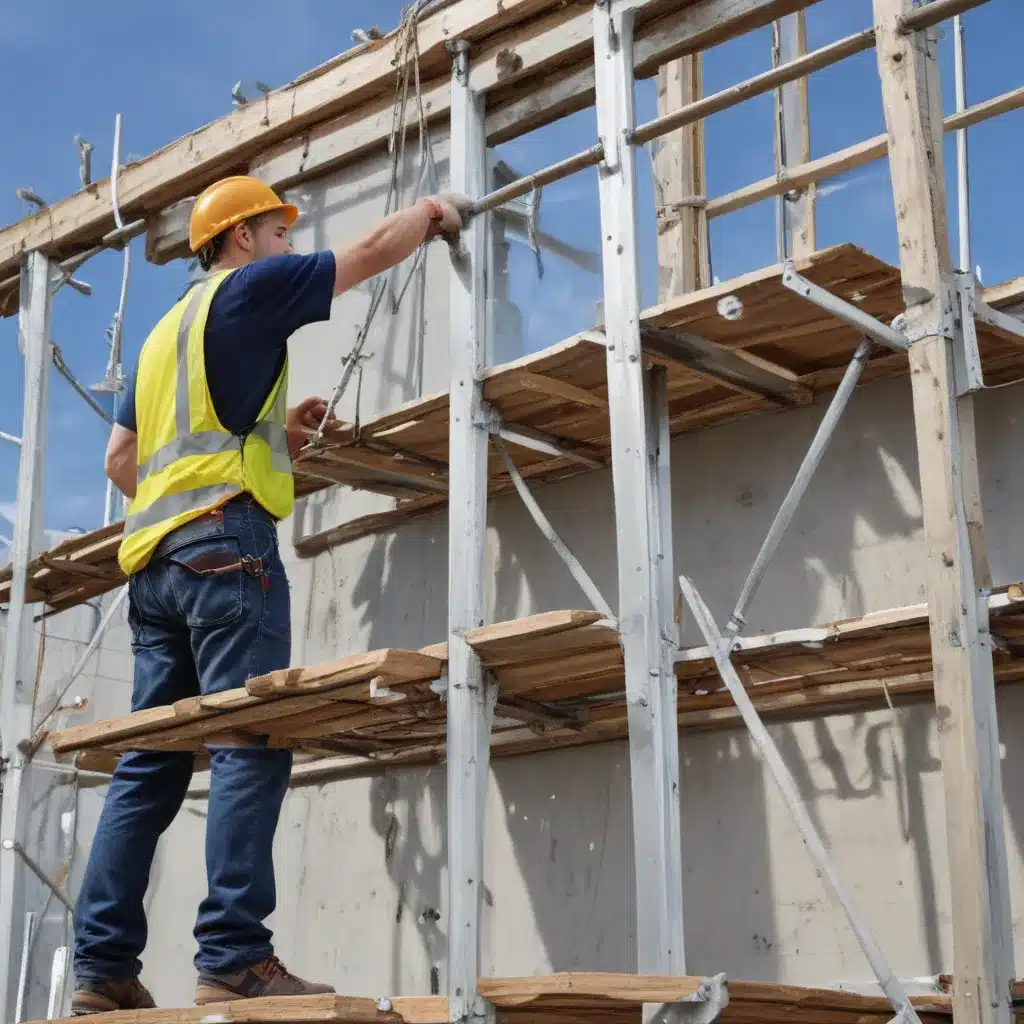
The Importance of Proper Scaffold Dismantling
As a scaffolding expert with years of experience under my belt, I can tell you that safely dismantling a scaffold is just as crucial as its proper installation. You see, these temporary structures are designed to provide a stable and secure platform for workers to access hard-to-reach areas, but they can also pose a serious risk if not taken down with the utmost care.
I’ve seen it all, from sloppy dismantling leading to collapsing structures to careless workers sustaining injuries. That’s why I’m here to share my expertise and guide you through the process of safely dismantling a scaffold after a job. Trust me, it’s not as straightforward as it may seem, but with the right knowledge and techniques, you can ensure a smooth and hazard-free experience.
Preparing for Scaffold Dismantling
Before we dive into the nitty-gritty of the dismantling process, it’s essential to properly prepare the site. This step is often overlooked, but trust me, it can make all the difference in the world.
First and foremost, I always recommend conducting a thorough safety assessment of the area. I’ll carefully inspect the scaffold, looking for any signs of damage, instability, or potential hazards. This includes checking the structural integrity of the framework, ensuring that all connections are secure, and identifying any loose or unstable components.
Once I’m satisfied with the scaffold’s condition, I’ll move on to creating a comprehensive dismantling plan. This involves carefully mapping out the sequence in which the scaffold will be taken down, identifying the necessary tools and equipment, and ensuring that all safety protocols are in place.
One of the most critical aspects of this planning stage is determining the appropriate personal protective equipment (PPE) for the job. I always make sure my team is outfitted with hard hats, gloves, sturdy footwear, and any other necessary safety gear. After all, the last thing we want is for someone to get injured during the dismantling process.
Step-by-Step Scaffold Dismantling
With the preparation complete, it’s time to dive into the actual dismantling process. This is where the real magic happens, and I can assure you that it’s not as simple as just taking everything down in reverse order.
I always start by carefully removing any components that are at height, such as the platforms and guardrails. These are the most precarious elements, and I make sure to lower them down gently and safely, rather than just tossing them to the ground.
Next, I’ll tackle the framework itself, systematically disassembling the scaffold from the top down. This involves carefully disconnecting the vertical standards, horizontal ledgers, and diagonal braces, making sure to support the structure at every step to prevent any sudden collapses.
One of the most crucial aspects of this process is ensuring that the scaffold is dismantled in a way that maintains its overall stability. I’ll often use temporary support structures, such as props or jacks, to keep the framework in place as I work my way down.
As I progress, I’ll also be mindful of the surrounding environment, constantly assessing for any potential hazards or obstacles that could interfere with the dismantling process. I’ll make sure to keep a safe distance from power lines, nearby structures, or any other potential sources of danger.
Proper Disposal and Cleanup
Once the scaffold has been completely dismantled, the job isn’t quite done yet. The final step is to ensure that all the materials are properly disposed of or stored for future use.
I’ll carefully inspect each component, looking for any signs of damage or wear and tear. Anything that’s still in good condition will be carefully cleaned, maintained, and stored for future projects. Anything that’s beyond repair will be responsibly disposed of, in accordance with local environmental regulations.
But the cleanup doesn’t stop there. I’ll also make sure to thoroughly tidy up the worksite, removing any debris or leftover materials. This not only helps to maintain a professional appearance but also ensures that the area is safe and accessible for other activities.
Mastering the Art of Scaffold Dismantling
Dismantling a scaffold safely is truly an art form, one that requires a keen eye for detail, a deep understanding of engineering principles, and a steadfast commitment to safety. It’s not something to be taken lightly, and I can assure you that it’s a skill that takes time and practice to develop.
Over the years, I’ve seen my fair share of scaffold dismantling mishaps, from minor incidents to catastrophic failures. And let me tell you, the consequences can be devastating, both in terms of property damage and personal injury.
But that’s why I’m so passionate about sharing my expertise with others. I want to empower scaffolding companies and workers to approach this task with the utmost care and consideration, ensuring that every job is completed without incident.
So, if you’re ever tasked with dismantling a scaffold, remember the lessons I’ve shared here today. Take the time to properly assess the structure, create a detailed plan, and execute the dismantling process with the precision of a master craftsman. Trust me, your safety, and the safety of your team, will thank you for it.
And if you ever find yourself in need of scaffolding services in the Slough, UK area, I’d be more than happy to lend a hand. Visit our website to learn more about our top-notch scaffolding solutions and how we can help make your next project a success.


